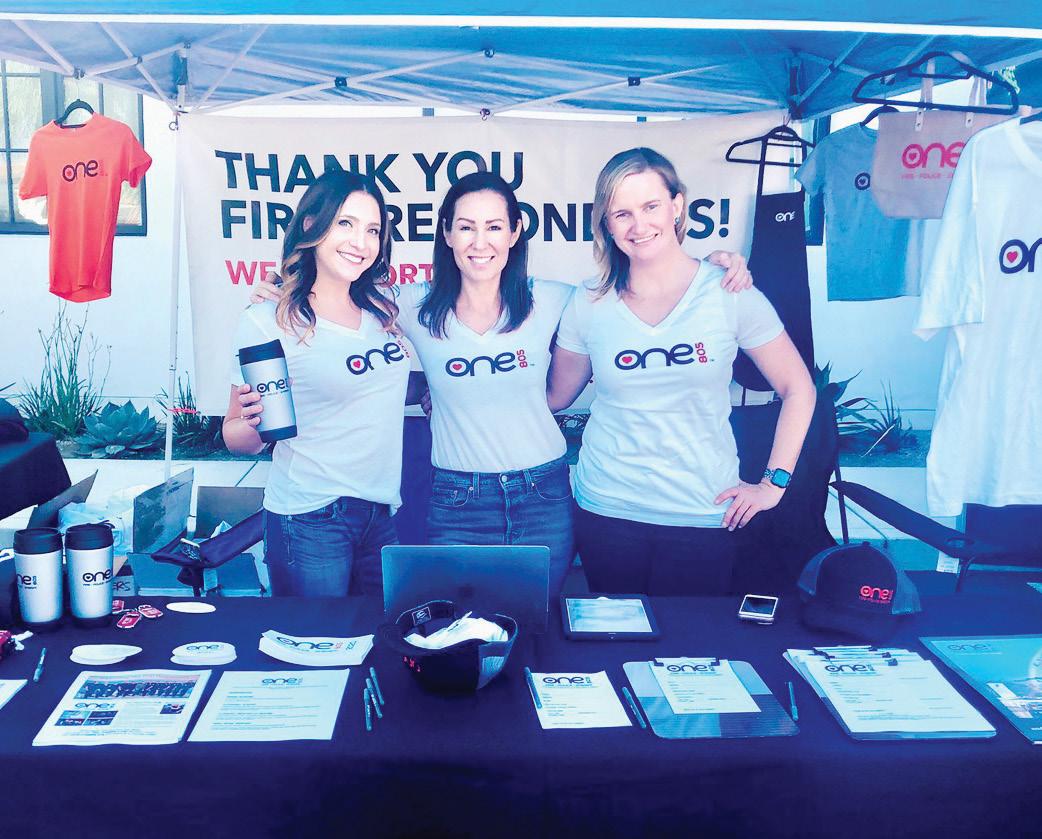
4 minute read
Living in the Age of Social Solidarity
from Here to Help!

Social distancing, physical distancing, not emotional distancing is what the experts are advising. But it’s counterintuitive in our experience to care for one another by staying away from one another. The conundrum tears at the very fabric of society, culture, and resonates against our animal instincts to huddle close in emergencies. Livin’ La Vida Soledad isn’t easy.
As the virus spreads with 24 cases at last count this week in Santa Barbara County, the people of Montecito and Santa Barbara are adapting quickly as the virus interacts with our social institutions and behaviors.
The new reality raises the question, as Ezra Klein has written in a recent essay, “Can social trust and solidarity replicate faster than the virus?”
Social distance sounds like a punishment akin to solitary confinement. Meanwhile we’re being called on to take actions for the sake of the greater good that aren’t always straightforward. To assume we’re asymptomatic as a way to rationalize the requisite six feet between us maybe a good rule of thumb and even true, but it’s worse-case scenario logic.
While many twist themselves into linguistic knots to rationalize the need to stave off the worst possibilities of the coronavirus pandemic, it seems that there’s a simple concept that explains it all. Social solidarity. Dawnielle Brownell, Angela Binetti Schmidt, and Shannon Garton of One805
MONTECITO JOURNAL36 Social Solidarity Today
Social solidarity isn’t something new. Social solidarity is why we keep our kids home from school when they are sick. Although only a percentage of Americans are old or fragile, we all know and love someone in those categories, and social solidarity is what compels us to knock on the door of an older neighbor to see if they’re okay. It permits us to sacrifice for each other. It’s even why at four-way stop signs in Santa Barbara people sit in their cars and keep waving each other to go first.
Montecito and Santa Barbara have a long-storied history of serious social solidarity. It’s a matter of survival and pride that our communities have endured earthquakes, oil spills, fires, droughts, and mudslides. And now a pandemic. Each catastrophic event has made the community stronger with those that “have” helping those that “haven’t,” banding together to dig each other out of tragedy and even manage to lift our spirits and celebrate with a festival, a fundraiser, or a concert in the process. Not every community wears its social solidarity on its sleeve the way ours does. This is a community where first responders are revered and lauded even showered with gifts on occasions of survival, many communities could learn from our experience.
So, in the time of this coronavirus that has upended lives around the world, where we have to quarantine and maintain social distance, the concept of social solidarity makes simple direct understandable sense of it all. Santa Barbara is as known for its charities and nonprofits as much as for its wine and weather. Montecito is known as much for its standard of giving as its standard of living. Social solidarity is our forte.
Organizations Mobilizing
In this time of crisis, organizations like AHA!, the Bucket Brigade, One805 and more have already gathered their resources and regrouped to help. Even our institutions, banks and hospitals have recommitted themselves to join the fray. New paradigms of sharing, collaboration, and working together are being forged every day. New practices and protocols are being instituted to meet this unusual situation, sometimes solving old problems, while addressing the new. Many of these new practices will continue on long after the dreaded virus has moved on. Over the next weeks the Montecito Journal will highlight many of these institutions, companies, groups and, most of all, the pivotal people who have put a stake in the ground to help, to organize and to express their social solidarity in the most clear straight forward uncomplicated way as possible in these complicated times.
The Timely Work of One805
This week we’ll focus on One805, a group that sprung out of a celebration of first responders and their heroic efforts in the mudslides of 2018. The mandate and mission of One805 is compelling and simple – to care and help those who care and help all of us.
Angela Binetti Schmidt is the voluble new executive director of the recently organized One805 501C that was born of the largest nonprofit event in Santa Barbara history – the Kick Ash Bash, which was fittingly a concert, a celebration, and a massive act of healing and appreciation for all the First Responders and their families who came to the rescue so many people in the Montecito debris flow.
A UCSB graduate with over fourteen years’ experience in the nonprofit sector, Angela is a passionate voice for the need to care for the people who care for us – the First Responders and in this current crisis, the Second Responders as well.
The Hospitals are on The Front Lines
We think of the police, firefighters, and ambulance drivers as our first line of defense and the hospital and its doctors and nurses and other workers as our second line of defense. But in this time of the coronavirus, it’s our doctors and nurses who are on the front lines risking their lives every day to care for the community.
It has become urgent front and center that the public understand this reversal and that we all support in our actions, especially the current order to social distance, and donations, masks, and other PPE (Personal Protective Equipment), the hospitals and hospital workers throughout Santa Barbara County. Our health and










